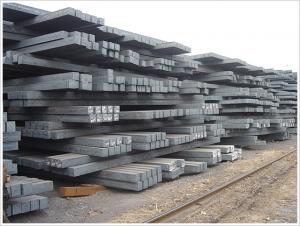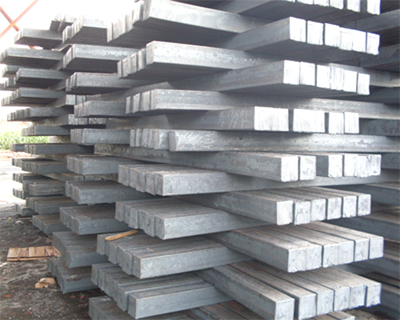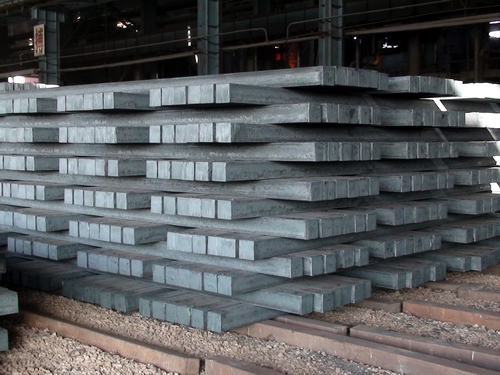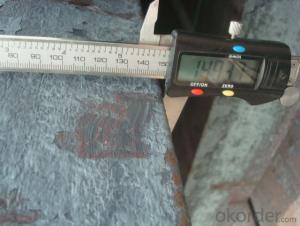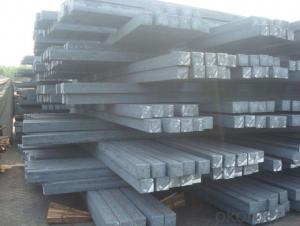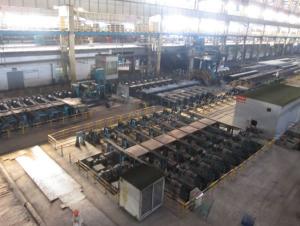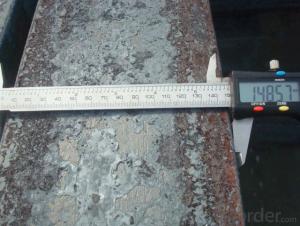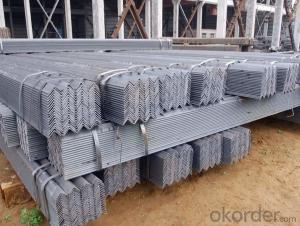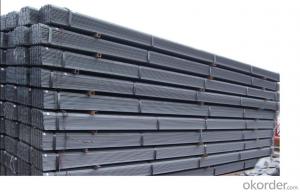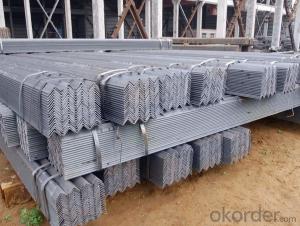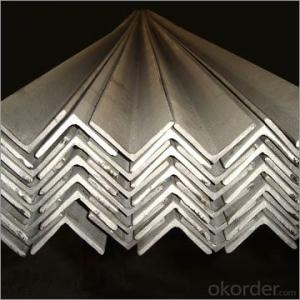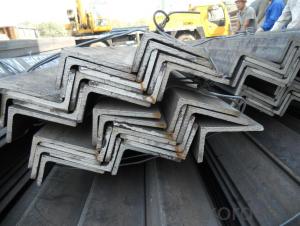Steel Unequal Angle Steel 20MM-250MM S235JR
- Loading Port:
- Shanghai
- Payment Terms:
- TT or LC
- Min Order Qty:
- 25 m.t.
- Supply Capability:
- 200000 m.t./month
OKorder Service Pledge
OKorder Financial Service
You Might Also Like
Product Description:
OKorder is offering high quality Hot Rolled Steel I-Beams at great prices with worldwide shipping. Our supplier is a world-class manufacturer of steel, with our products utilized the world over. OKorder annually supplies products to European, North American and Asian markets. We provide quotations within 24 hours of receiving an inquiry and guarantee competitive prices.
Product Applications:
According to the needs of different structures, Angle can compose to different force support component, and also can be the connections between components. It is widely used in various building structures and engineering structures such as roof beams, bridges, transmission towers, hoisting machinery and transport machinery, ships, industrial furnaces, reaction tower, container frame and warehouse etc
Product Advantages:
OKorder's Steel I-Beams are durable, strong, and resist corrosion.
Main Product Features:
· Premium quality
· Prompt delivery & seaworthy packing (30 days after receiving deposit)
· Corrosion resistance
· Can be recycled and reused
· Mill test certification
· Professional Service
· Competitive pricing
Product Specifications:
Manufacture: Hot rolled
Grade: Q195 – 235
Certificates: ISO, SGS, BV, CIQ
Length: 6m – 12m, as per customer request
Packaging: Export packing, nude packing, bundled
Sizes: 25mm-250mm | ||||||||||||
a*t | ||||||||||||
25*2.5-4.0 | 70*6.0-9.0 | 130*9.0-15 | ||||||||||
30*2.5-6.6 | 75*6.0-9.0 | 140*10-14 | ||||||||||
36*3.0-5.0 | 80*5.0-10 | 150*10-20 | ||||||||||
38*2.3-6.0 | 90*7.0-10 | 160*10-16 | ||||||||||
40*3.0-5.0 | 100*6.0-12 | 175*12-15 | ||||||||||
45*4.0-6.0 | 110*8.0-10 | 180*12-18 | ||||||||||
50*4.0-6.0 | 120*6.0-15 | 200*14-25 | ||||||||||
60*4.0-8.0 | 125*8.0-14 | 250*25 | ||||||||||
FAQ:
Q1: Why buy Materials & Equipment from OKorder.com?
A1: All products offered byOKorder.com are carefully selected from China's most reliable manufacturing enterprises. Through its ISO certifications, OKorder.com adheres to the highest standards and a commitment to supply chain safety and customer satisfaction.
Q2: What makes stainless steel stainless?
A2: Stainless steel must contain at least 10.5 % chromium. It is this element that reacts with the oxygen in the air to form a complex chrome-oxide surface layer that is invisible but strong enough to prevent further oxygen from "staining" (rusting) the surface. Higher levels of chromium and the addition of other alloying elements such as nickel and molybdenum enhance this surface layer and improve the corrosion resistance of the stainless material.
Q3: Can stainless steel rust?
A3: Stainless does not "rust" as you think of regular steel rusting with a red oxide on the surface that flakes off. If you see red rust it is probably due to some iron particles that have contaminated the surface of the stainless steel and it is these iron particles that are rusting. Look at the source of the rusting and see if you can remove it from the surface.
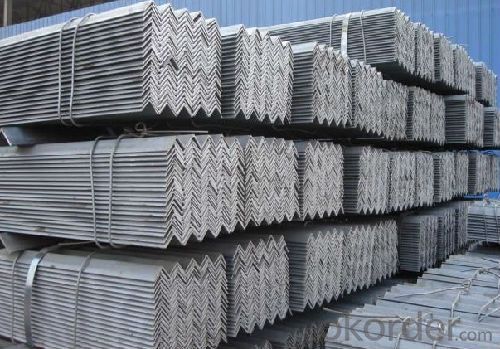
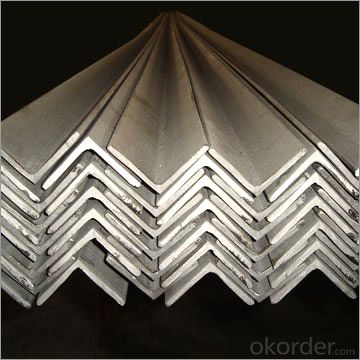
- Q: What are the potential applications of steel billets in the automotive aftermarket?
- The automotive aftermarket can benefit greatly from the wide variety of uses for steel billets. The strength, durability, and versatility of steel make it an ideal material for many applications. To begin with, steel billets are commonly used in the production of various automotive parts, such as engine components, transmission parts, suspension systems, and chassis components. These critical components require materials with high tensile strength and resistance to wear and tear, which steel billets can provide. In addition, steel billets can be utilized to create customized or aftermarket modifications for vehicles. This includes performance upgrades like engine tuning, exhaust systems, and suspension modifications. Thanks to its machinability, steel billets can be shaped and formed into precise shapes and sizes, resulting in improved performance and customization options. Furthermore, steel billets can be employed in the manufacturing of automotive tools and equipment used in the aftermarket. This encompasses tools like jacks, stands, wrenches, and other specialized equipment needed for repairs, maintenance, and modifications. The use of steel billets ensures that these tools are strong, durable, and capable of withstanding the challenging conditions of the automotive industry. Moreover, steel billets are also used in the production of aftermarket body parts and accessories. These can range from exterior components such as bumpers, grilles, and fenders, to interior accessories like shift knobs, pedals, and trim pieces. Steel billets can be shaped, welded, and finished to meet the desired specifications and aesthetics of the vehicle owner, creating a wide range of options for customization. Overall, steel billets have an extensive range of potential applications in the automotive aftermarket. From critical engine components to performance upgrades, tools, and body modifications, steel billets offer the necessary strength, durability, and versatility required in the automotive industry.
- Q: What is the role of steel billets in the manufacturing of conveyor systems?
- The manufacturing of conveyor systems heavily relies on steel billets, which serve as the primary material for producing various components and parts. To begin with, steel billets play a vital role in constructing the framework and structure of the conveyor system. They are shaped and cut to form the main frame, supports, and other structural elements that provide stability and strength to the entire system. The superior strength and durability of steel make it an ideal material for this purpose, ensuring that the conveyor system can withstand heavy loads and operate efficiently. Moreover, steel billets are crucial in the fabrication of rollers and pulleys, which are indispensable components of conveyor systems. These rollers and pulleys are responsible for guiding and moving the conveyor belt, facilitating the smooth and uninterrupted flow of materials. Steel billets are forged and machined to create these components, guaranteeing their reliability and long lifespan even in demanding working conditions. Additionally, steel billets are also utilized in the production of brackets, connectors, and fasteners that secure the different parts of the conveyor system together. These components provide the necessary connections and attachments, ensuring the proper assembly and functioning of the conveyor system. Furthermore, steel billets offer the advantage of being moldable and shapeable into customized parts according to the specific requirements of the conveyor system. This flexibility allows conveyor manufacturers to design and manufacture conveyor systems that are tailored to the unique needs of various industries and applications. In conclusion, steel billets are essential in the manufacturing of conveyor systems as they provide the raw material for constructing the system's framework, rollers, pulleys, brackets, connectors, and other components. The high strength, durability, and flexibility of steel billets make them a vital ingredient in creating reliable and efficient conveyor systems.
- Q: How are steel billets used in the production of bearings?
- Steel billets are first heated and then forged or rolled into the desired shape and size for bearing production. These billets serve as the raw material for manufacturing bearing components such as inner and outer rings, cages, and rolling elements. The billets are carefully processed and machined to meet the specific requirements of the bearing design, ensuring strength, durability, and precision in the final product.
- Q: How do steel billets contribute to the manufacturing of rail and transportation systems?
- Steel billets are an essential component in the manufacturing of rail and transportation systems. These billets serve as the raw material for the production of various components used in the construction of railways, such as rails, sleepers, and fasteners. One of the primary uses of steel billets in rail manufacturing is for the production of railway tracks. Steel billets are first heated and then rolled into long, slender sections called rails. These rails are then further processed and treated to withstand the heavy loads and constant wear and tear experienced in railway operations. The durability, strength, and resistance to deformation of steel make it an ideal material for railway tracks, ensuring safe and efficient transportation. Steel billets also play a vital role in the manufacturing of sleepers or railroad ties, which are used to support the rails and maintain their alignment. These sleepers, typically made from prestressed concrete or wood, require reinforcing bars made from steel billets to enhance their strength and structural integrity. Additionally, steel billets are used to produce fasteners, such as bolts, clips, and spikes, which are crucial for securely fastening rails to sleepers and maintaining track stability. Moreover, steel billets are used in the production of various transportation system components, including chassis, frames, and suspension systems for trains, trams, buses, and other vehicles. Their high strength and excellent formability make steel billets an ideal choice for these applications, as they can withstand the heavy loads and provide structural integrity necessary for safe and reliable transportation. In summary, steel billets play a significant role in the manufacturing of rail and transportation systems. From the production of railway tracks to the fabrication of sleepers, fasteners, and vehicle components, steel billets provide the necessary strength, durability, and structural integrity required for the efficient and safe operation of railways and transportation systems.
- Q: Are steel billets used in the production of construction equipment?
- Steel billets are a frequently employed resource in the manufacturing of construction equipment. Typically hot-rolled or forged, these semi-finished steel products assume diverse shapes and sizes. As a result, they serve as the foundational material for constructing elements like beams, plates, rods, and structural parts in construction equipment. By utilizing steel billets, the end product is fortified with durability, strength, and dependability, rendering it apt for demanding tasks within the construction sector.
- Q: Can steel billets be used for structural applications?
- Yes, steel billets can be used for structural applications. Steel billets are semi-finished products that are typically produced through a continuous casting or hot rolling process. They have a rectangular cross-section and are used as raw material for further processing into various shapes and forms, including structural components. Steel billets possess several properties that make them suitable for structural applications. Firstly, steel is known for its high strength and durability, which allows it to withstand heavy loads and resist deformation. This makes steel billets a reliable choice for constructing buildings, bridges, and other infrastructure projects. Additionally, steel billets can be easily fabricated into different shapes and sizes to meet the specific requirements of a structural application. They can be further processed through techniques such as hot rolling, forging, or extrusion to produce beams, columns, bars, and other structural elements. Moreover, steel billets offer good weldability, which allows for the joining of individual components to create larger structures. This makes them an ideal material for construction projects where prefabrication and on-site assembly are common practices. Overall, steel billets are widely used in structural applications due to their high strength, versatility in fabrication, and excellent mechanical properties.
- Q: What are the main factors that determine the profitability of steel billets manufacturers?
- There are several key factors that impact the profitability of steel billets manufacturers. These factors can vary depending on market conditions and industry dynamics. However, determining profitability in this sector involves considering certain main factors: 1. Raw material costs: The cost of raw materials, such as iron ore and scrap metal, greatly affects profitability. Fluctuations in these costs can influence the overall cost structure of steel billet production. Manufacturers who have efficient procurement strategies and long-term raw material contracts may have a competitive advantage in managing these costs. 2. Production efficiency: The efficiency of the manufacturing process plays a vital role in profitability. This includes factors like production capacity utilization, energy consumption, labor productivity, and waste management. Manufacturers who can optimize their operations and minimize costs are more likely to achieve higher profitability. 3. Market demand and pricing: The demand for steel billets is influenced by factors like construction activity, infrastructure development, and manufacturing output. Manufacturers who can accurately forecast and meet market demand are better positioned to achieve profitability. Additionally, the ability to negotiate favorable pricing and manage price fluctuations can significantly impact profitability. 4. Competitive landscape: The level of competition within the steel billets manufacturing industry can affect profitability. Manufacturers operating in a highly competitive market may face challenges in maintaining profit margins due to price pressures. Companies that can differentiate themselves through innovation, quality, and customer service may have a better chance of achieving sustainable profitability. 5. Operating costs: In addition to raw material costs, other operating expenses like transportation, energy, maintenance, and overhead costs can impact profitability. Efficient cost management practices, such as implementing lean manufacturing principles and optimizing supply chain logistics, can help reduce operating costs and improve profitability. 6. International trade and tariffs: Steel billets manufacturers are often impacted by international trade dynamics and tariffs. The imposition of tariffs on steel imports or exports can disrupt the market and impact profitability. Manufacturers who can adapt to changes in trade policies and diversify their customer base or sourcing locations may be better positioned to mitigate these risks. 7. Currency exchange rates: Steel billets manufacturers engaged in international trade may be exposed to currency exchange rate fluctuations. These fluctuations can impact the cost of imported raw materials or the competitiveness of exported products. Manufacturers who have effective currency hedging strategies or local production capabilities may be better able to manage these risks and maintain profitability. In conclusion, the profitability of steel billets manufacturers is influenced by various factors, including raw material costs, production efficiency, market demand, competition, operating costs, international trade dynamics, and currency exchange rates. Successful manufacturers in this industry must carefully analyze and manage these factors to achieve sustainable profitability.
- Q: Are steel billets subject to any regulations or certifications?
- Yes, steel billets are subject to various regulations and certifications. These regulations and certifications ensure that the steel billets meet specific quality standards, safety requirements, and environmental regulations. Some common certifications include ISO 9001 for quality management systems, ISO 14001 for environmental management systems, and certifications from industry-specific organizations like the American Society for Testing and Materials (ASTM) or the International Organization for Standardization (ISO). Additionally, steel billets may need to comply with specific regulations in the country or region where they are produced or used, such as building codes or product safety regulations.
- Q: How are steel billets used in the shipbuilding industry?
- Steel billets are an integral component in the shipbuilding industry, primarily used for the construction of various parts and structures of ships. These billets serve as the raw material for manufacturing essential components such as hulls, frames, bulkheads, and other structural elements. Shipbuilding requires steel with exceptional strength, durability, and corrosion resistance, making steel billets an ideal choice due to their high-quality composition and properties. The billets are first shaped and formed into the desired dimensions, which can vary depending on the specific requirements of the ship's design. Once the steel billets are prepared, they are then used in various shipbuilding processes. One of the key applications is in the construction of the ship's hull, which is the external structure that provides the necessary strength and buoyancy. Steel billets are cut and welded together to form the hull's framework, ensuring the ship's structural integrity and stability. Additionally, steel billets are employed in manufacturing frames, bulkheads, and decks. Frames provide the structural support and rigidity to the ship's framework, while bulkheads divide the ship's internal space into separate compartments, enhancing safety and preventing water ingress in case of any damage. Decks, on the other hand, serve as the floors of different levels within the ship. Moreover, steel billets are used in the fabrication of various equipment and machinery installed on the ship. These include propulsion systems, cranes, winches, and other heavy-duty components that contribute to the ship's functionality and operational capabilities. Overall, steel billets play a crucial role in the shipbuilding industry as they form the foundation for constructing ships and their essential components. The high-quality steel and its versatility allow shipbuilders to create vessels that meet stringent safety standards, withstand harsh marine conditions, and ensure the longevity of the ships throughout their service life.
- Q: What is the role of steel billets in the manufacturing of material handling equipment?
- Material handling equipment manufacturing relies heavily on steel billets, which are essential semi-finished steel products used as raw materials for various manufacturing processes. When it comes to material handling equipment, steel billets find their primary application in fabricating heavy-duty components like frames, beams, and brackets. These components must possess exceptional strength, durability, and resistance to wear and tear to endure the demanding conditions in which material handling equipment operates. Steel billets enable manufacturers to create these components with the necessary mechanical properties. Initially, the billets are heated and then shaped through processes such as rolling, forging, or extrusion to achieve the desired shape and dimensions. This shaping process ensures that the components have the required strength and structural integrity to handle the weight and stress associated with material handling tasks. In addition, steel billets offer excellent weldability, which is crucial for fabricating material handling equipment. The ability to securely and efficiently weld the components together ensures the safe and efficient movement of heavy loads, particularly in equipment like cranes, forklifts, and conveyors. Furthermore, steel billets provide a cost-effective solution for manufacturing material handling equipment. Steel is readily available, relatively affordable, and can be recycled, making it a sustainable choice. The versatility of steel billets also allows manufacturers to create components of various shapes and sizes, enabling customization to meet specific requirements. In conclusion, steel billets play a vital role in the manufacturing of material handling equipment. They provide the necessary raw material to create strong, durable, and reliable components that can withstand the demanding conditions of material handling tasks. With their excellent mechanical properties and weldability, steel billets contribute to the safe and efficient operation of material handling equipment.
Send your message to us
Steel Unequal Angle Steel 20MM-250MM S235JR
- Loading Port:
- Shanghai
- Payment Terms:
- TT or LC
- Min Order Qty:
- 25 m.t.
- Supply Capability:
- 200000 m.t./month
OKorder Service Pledge
OKorder Financial Service
Similar products
Hot products
Hot Searches
Related keywords
